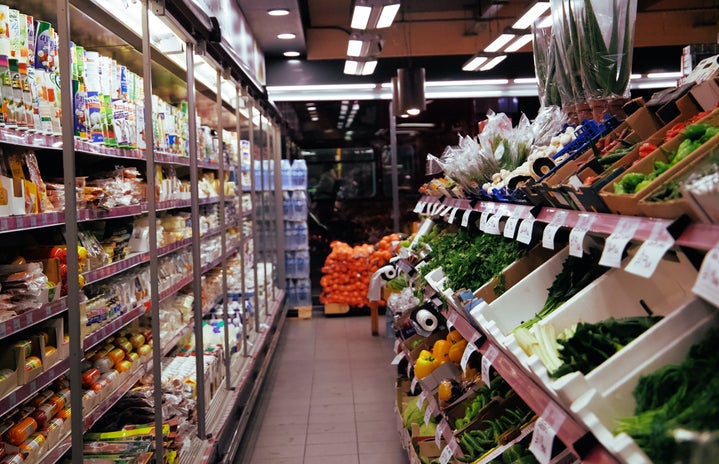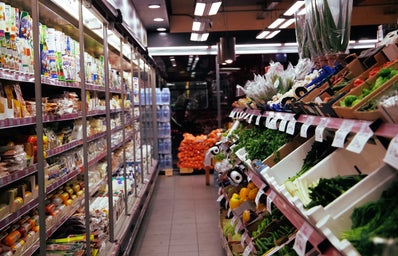As a college sophomore, I had never really experimented with cooking too much in the past. Freshman year I was very dependent on my meal swipes and takeout meals to get me through the year. Before that, I would help my parents cook a few dishes but didn’t really know how to do much myself. As I have spent more time cooking, especially during the beginning of the pandemic, I have developed a grocery list that pretty much works as a base for all the meals I want to create. If you ever feel like you are at a loss of what to buy at the grocery store and find yourself just walking up and down the aisles, don’t feel alone. I often expand this list when I get to the store, adding in what looks good when I get there even if it wasn’t what I came for.
Dairy – it is surprising to realize how necessary dairy is in cooking. If you’re lactose tolerant like myself you learn to work around it and make easy changes like using almond milk instead of whole milk, or olive oil instead of butter. Dairy is great to add to many dishes, such as adding heavy cream to a pasta sauce to thicken it or feta cheese to a salad for a unique flavor.
-
Milk of choice
-
Cheese
-
Eggs
-
Yogurt
-
butter
Grains – everyone loves a little carbohydrate in their life. Grains such as flour, rice, and pasta have a very long shelf life and are pantry staples especially in a college kitchen. I have been using crescent rolls and premade pizza dough to make garlic knots recently.
-
Rice
-
Bread of choice (baguettes, loaves, crescent rolls)
-
Pasta
-
Quinoa
-
Flour
-
Granola
-
Oats
Meat – although not necessary, adding meat to your grocery list provides a great source of protein to your meals. Lunch meat can make for a really quick and easy lunch, and chicken breast is not being too hard to handle as a beginner chef. While ground beef or turkey is great for many meals such as tacos, or an easy meat sauce for pasta.
-
Chicken breast
-
Lunchmeat
-
nd beef/turkey
Fruits & vegetables – a variety of fruits and vegetables adds color, nutrients, and flavor to your meals, while also making them healthier.
-
Garlic (minced or cloves)
-
Onions
-
Bananas
-
Oranges
-
Avocados
-
Broccoli
-
Green beans
-
Spinach
-
Potatoes
-
Apples
Miscellaneous – there are a few things that every kitchen should have that will benefit all of your meals and satisfy your cravings.
-
Olive oil
-
Seasonings of choice (basic ones include salt, pepper, paprika, garlic powder, onion powder, oregano, red pepper flakes)
-
Canned soup
-
Ramen
-
Snacks of choice
-
Prepped meals (frozen, microwavable)
One of the most important things I learned about cooking and grocery shopping is to plan your meals out before you go shopping. I like to write down the meals I want to cook for the week when I plan on making them, and everything I may need for the meals. Once you have all the pantry staples grocery shopping becomes easy and fast.



